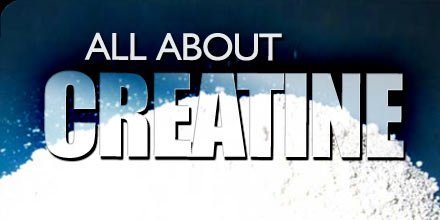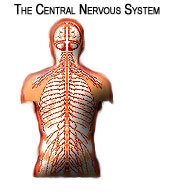 | Creatine is the most popular and commonly used sports supplement available today. There are numerous studies backed by anecdotal evidence that support the efficacy of creatine supplementation. Find out everything you ever needed to know about creatine. |

By: Jeremy Likness
Creatine is the most popular and commonly used sports supplement available today. There are numerous studies backed by anecdotal evidence that support the efficacy of creatine supplementation. For the majority of the population, including both elite athletes and untrained individuals, creatine supplementation increases fat free mass and improves anaerobic and possibly aerobic performance.
While the effectiveness of creatine is well known, the most effective way to take creatine is not known. In order to design an "optimal" cycle for creatine, a number of factors must be considered.
![]()
What Is Creatine?
![]()
A French scientist discovered creatine in 1835. Creatine is a natural constituent of meat, mainly found in red meat. Creatine is manufactured naturally in the body from the amino acids glycine, arginine, and methionine. This process takes place in the kidneys, liver, and pancreas.
Approximately 40% of the body's creatine stores are free creatine (Cr), while the remaining 60% is stored in form of creatine phosphate (CP). The typical male adult processes 2 grams of creatine per day, and replaces that amount through dietary intake and fabrication within the body.
Creatine is used for the resynthesis of ATP. ATP, or adenosine triphosphate, is the "power" that drives muscular energetics. When a muscle is required to contract, the bonds in the ATP molecule are split, yielding ADP (adenosine-diphosphate). The energy released by breaking this bond powers the contraction of the muscle.
When ATP is depleted within the cell, the cell can no longer contract. There are several methods by which the body rebuilds ATP. The fastest method, without oxygen, is through CP. Creatine phosphate is "split" to yield the phosphate portion of the molecule.
This phosphate portion bonds to the ADP, turning it back to ATP. Once CP stores within the cell are depleted, the body must use other methods to replenish ATP.
Supplementation with creatine increases Cr and CP within the muscle, allowing further capacity to regenerate ATP. In other words, the creatine enhances the ability of the muscle to maintain power output during brief periods of high-intensity exercise. The periods are brief because the ability of a cell to store CP is limited, therefore the body will quickly move to other methods of replenishing ATP.
The majority of studies regarding creatine supplementation have used creatine monohydrate, the form of creatine bound to a water molecule. Some studies suggest that the combination of creatine and carbohydrate will enhance absorption or "uptake" of creatine. Science shows that creatine is unstable in liquid form, meaning that serum or liquid delivery systems are currently not supported by scientific literature.
The creatine rapidly degrades to creatinine, which is not useable by the body. There is very little support for the notion that creatine in any type of mixture, including an effervescent mixture, is absorbed more efficiently by the body. A company known as Albion Laboratories, Inc. claims to have found an effective delivery mechanism by chelating creatine to magnesium (a chelate is an organic compound that is typically absorbed more readily by the body than individual elements).
 | ||
| The Term Chelate:
The term chelate was first applied in 1920 by Sir Gilbert T. Morgan and H. D. K. Drew, who stated: "The adjective chelate, derived from the great claw or chele (Greek) of the lobster or other crustaceans, is suggested for the caliperlike groups which function as two associating units and fasten to the central atom so as to produce heterocyclic rings." [ wikipedia.org ] | ||
![]()
What Is The Most Effective Creatine Dose?
![]()
Effective doses will be examined later in this article. Current studies tend to follow a very standard protocol:
- 20 g / d for 5 - 7 days ("loading phase")
5 g / d for remainder of cycle ("maintenance phase")
A more customized approach is to determine dose based on mass. A common formula is:
0.3 g / kg / d for 5 - 7 days
0.03 g / kg / d for remainder of cycle
Thus, an individual weighing two-hundred (200) pounds would require 200 lb * (1 lb / 2.2 kg) * 0.3 g = 27 grams per day for the loading phase, then 2.7 grams per day for the maintenance phase. Calculate this for yourself below.
It is known that creatine supplementation increases intramuscular creatine stores. To base creatine dose on total weight, therefore, seems inaccurate. A 200 lb individual with 20% body fat would have less lean mass than a 200 lb individual with 8% body fat.
![]()
![]() Calculate Your Creatine Intake - Based On Total Bodyweight:
Calculate Your Creatine Intake - Based On Total Bodyweight:
![]()
 | ||
| 1 of 3: The Central Nervous System (CNS):
 The human central nervous system consists of the brain and spinal cord. These lie in the midline of the body and are protected by the skull and vertebrae respectively. This collection of billions of neurons is arguably the most complex object known. The central nervous system along with the peripheral nervous system comprise a primary division of controls that command all physical activities of a human. Neurons of the central nervous system affect consciousness and mental activity while spinal extensions of central nervous system neuron pathways affect skeletal muscles and organs in the body. | ||
![]()
![]() Week 1:
Week 1:
![]()
- Monday - Chest/Back (row) holistic
- Tuesday - HIIT exercise
- Wednesday - Legs moderate
- Thursday - HIIT exercise
- Friday - Shoulders/Back (pull-down) holistic
- Saturday - Moderate cardio
- Sunday - ** rest **
![]()
![]() Week 2:
Week 2:
![]()
- Monday - Chest/Back moderate + triceps
- Tuesday - HIIT exercise
- Wednesday - Legs holistic
- Thursday - HIIT exercise
- Friday - Shoulders/Back moderate + biceps + traps
- Saturday - Moderate cardio
- Sunday - ** rest **
![]()
![]() Week 3:
Week 3:
![]()
- Monday - Chest/Back (row) holistic
- Tuesday - HIIT exercise
- Wednesday - Legs moderate
- Thursday - HIIT exercise
- Friday - Shoulders/Back (pull-down) holistic
- Saturday - Moderate cardio
- Sunday - ** rest ** (begin low carb phase)
![]()
![]() Week 4:
Week 4:
![]()
- Monday - HIIT exercise
- Tuesday - Unload routine (full body workout)
- Wednesday - Moderate cardio (begin high carb phase)
- Thursday - Moderate cardio
- Friday - ** rest ** (return to normal diet)
- Saturday - ** rest **
- Sunday - ** rest - end of cycle **
The "unload routine" should contain mostly multi-joint, compound movements, such as squats, dead-lifts, bench press, clean and press, wide-grip pull-ups, and bent-over rows. Multiple sets of higher reps (15 - 20) should be performed in superset fashion with minimal rest.
The final rest period prior to the end of cycle will allow recovery while in a super compensated state. This could lead to significant hypertrophy.
![]()
Creatine Supplementation - Is It For You?
![]()
Creatine supplementation may provide you with the results that you are looking for. No supplement can replace the fundamental elements of a fit, healthy lifestyle. These include sufficient rest and recovery, proper nutrition, and proper training stimulus.
Only when these factors exist and are optimized for your specific body will you begin to see results such as reduction of body fat and accumulation of muscle mass. When this occurs, supplementation is a possible "next step" to increase your over all results.
 Back
Back  Next
Next 


No comments:
Post a Comment